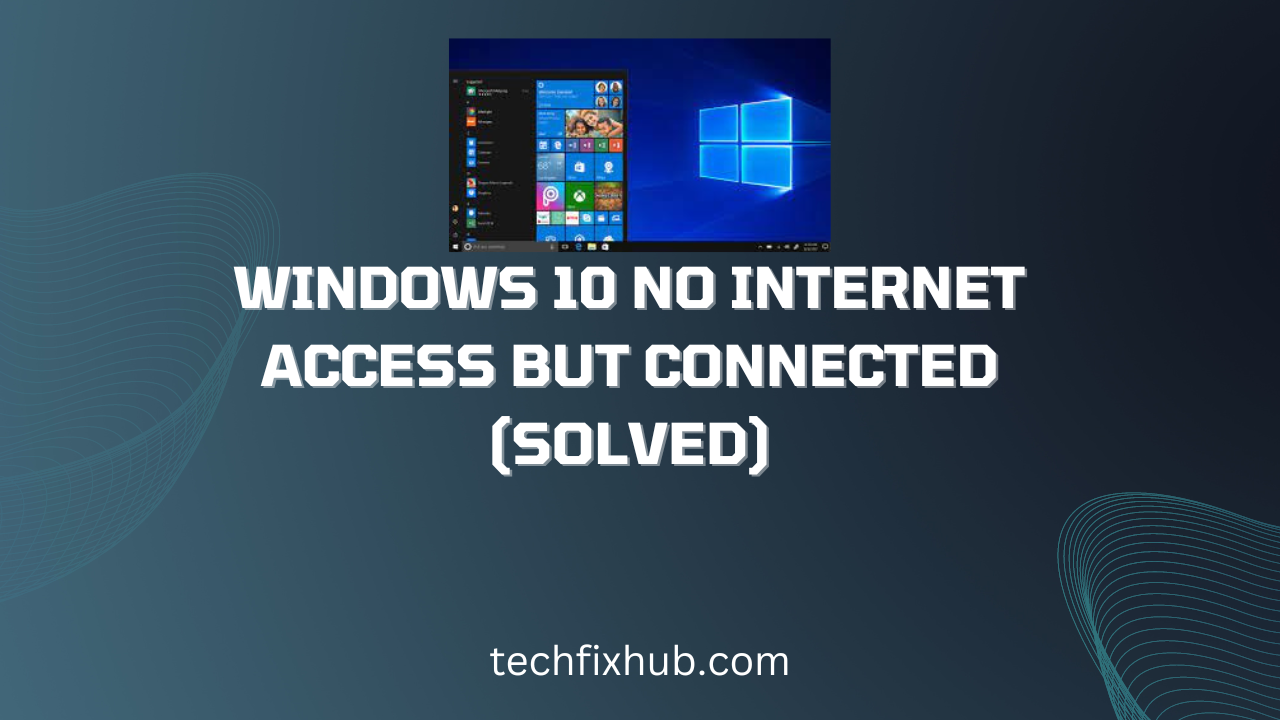Windows 10 is the Microsoft’s operating system, and it’s available on several devices. But sometimes you may have problems with your network connection or internet connection in Windows 10. The good news is that there are several solutions you can try to fix this problem.
I have Windows 10 computer that has no internet access, but it is connected to the internet. I have tried turning off my router, checking if there is any other network device on the same line and restarting my computer.
Are you facing a similar issue with your Windows 10 PC? If yes, this article will show you what could probably be the cause and a way to fix the issue with no hassle.
How To Fix Windows 10 No Internet Access But Connected
The first thing you should do is check your connection type. If you have a wired connection, then make sure that there are no problems with the cable or the router.
If your computer has an Ethernet port and it’s plugged into an Ethernet-enabled wall outlet, then try plugging it into another outlet in case there’s power loss somewhere along the line.
If this still doesn’t fix the issue, check whether your modem works properly by following these steps:
- Turn off power to all devices but one (this includes any wireless access points). Reset them if necessary; otherwise just unplug everything except for one device at a time until all connections are tested individually.
- Check whether each device is connected properly by checking each label on its side and verifying that they match up with those on their respective devices.
- Try turning off wireless connectivity completely if necessary in order for you to troubleshoot any issues resulting from using wireless networks
If none of these solve the problem, try unplugging/reconnecting all cables that connect everything together (such as Wi-Fi adapter). Or follow the five (5) troubleshooting tips below to get rid of the network issue on your Windows 10.
Run Network Troubleshooter
- Open the Start menu and go to Settings > Update & Security > Windows Update.
- Click on Advanced options at the bottom of your screen, then select Troubleshooter from under Choose an option (if it isn’t available, click on Try help).
- In the window that opens, click Run troubleshooter: follow any prompts that may appear during this process until you’re back at your desktop with a message saying Windows has successfully updated drivers for your device and restarted properly!
Change Adapter Settings
- Go to Start, type ncpa.cpl and press Enter.
- Click your network adapter (for example: Ethernet).
- Click Properties on the right side of the page that appears by clicking Properties in Device Manager (you may need to scroll down until you find it) or double click its name if it isn’t already selected in Device Manager (it should be grayed out).
- Select Configure from the menu that appears at top left corner of the screen when you hover over Network Connections icon in Control Panel section; this will open up Network Connections window where you can see all network adapters connected through network cable or wireless connection and so forth, along with their properties like speed and so forth, but don’t worry about them right now.
Delete Wireless Profile.
- Open the control panel by typing “control” in the search box, then select “Control Panel”.
- In the Control Panel window, click on Network and Internet > Network and Sharing Center > Change adapter settings under Network adapters.
- Right-click on your internet connection and select Properties from there (if you don’t see this option, right-click again).
Update Windows
If you have an issue with Windows 10, you can try to update the operating system. The updates are important because they contain security fixes and bug fixes that help prevent problems from occurring in future versions of Windows 10.
If your computer doesn’t want to update or if it takes too long for the process to complete, there are a few things that might cause this problem:
- Your settings may prevent updates from completing.
- Windows Update might not be enabled on your device’s settings page (Settings > Apps & features > Updates). This could happen if there was something wrong with how updates were installed on your computer before, for example, if someone had downloaded malware on your Windows 10 while setting up their new installation of Windows 10 and now those files aren’t being removed properly during setup attempts as part of regular maintenance routines by Microsoft Technical Support Engineers .
Reset Your Network Settings.
To reset your network settings in Windows 10:
- Press the Windows key and then type “cmd” into search.
- Select Command Prompt (Admin) as shown below. To open a command prompt Window, click, or tap on “Start” then right-click or tap/click on the Start menu icon and select “Command Prompt” from there.
Other Articles
How to Fix File Explorer Not Working in Windows 10
How To Share Files Over Bluetooth In Windows 10
How to Use Windows Security Malware Protection On Windows 10
Conclusion
We hope this article has helped you understand how to fix Windows 10 no internet access but connected. So it’s safe to assume that the solution is most likely one of two things: either you’ve got a bad cable connection or your internet provider has messed up. If you’re still not sure which is causing this problem, then let us know in the comments below.

